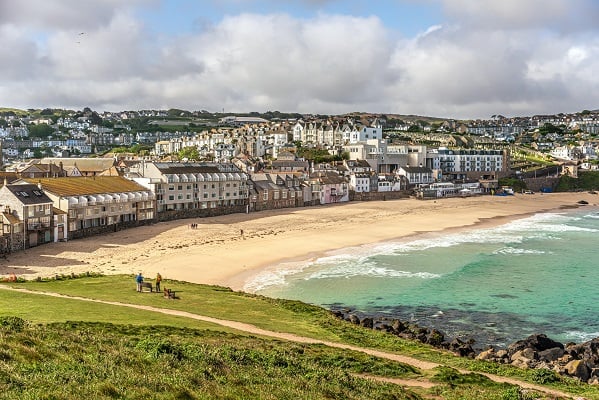Over half of the top 10 areas to see first-time buyer affordability decline are close to or by the coast, with Adur in West Sussex topping the list.
The average asking price for a first-time buyer type home in Adur is now 11.6 times the average salary for the area, up from 8.7 times before the pandemic.
Hertsmere in Hertfordshire is second, where first-time buyer average asking prices are now 11.8 times the average local salary, compared with 9.6 times in 2019. Richmondshire in North Yorkshire is third, where an average first home is now 8.2 times the local salary, up from 6.0 times.
The majority of areas to see affordability improve during the pandemic are in London or in traditional commuter areas, albeit only slightly. Affordability has improved in these areas due to local salaries increasing at a faster pace than house prices.
Average asking prices in Lambeth are now 11.8 times the average salary for the area, compared with 13.3 times pre-pandemic. In Ealing, it is now 10.3 times compared with 11.7 times three years ago, and in Reading it is now 6.8 times compared with 7.8 times.
The data is based on an average solo first-time buyer, and assumes they have been able to save up a 10% deposit towards an average first-time buyer type property in their area (properties with two bedrooms or fewer). It also adjusts the latest available local salary data from ONS up to May 2022, by using the average national earnings increase, to get a current picture of local affordability.
Across Great Britain, an average first-time buyer type home is now 7.2 times the average salary, up from 6.9 times in 2019. The average 10% deposit for a first-time buyer home has risen by 17%, to £22,409.
Rising asking prices and interest rates means that the average monthly mortgage payment for new first-time buyers putting down a 10% deposit is now £1,032. This is 39% higher than the same time in 2019.
Despite affordability being stretched for many, enquiries for first-time buyer type properties are significantly up on the more normal market of 2019. Demand for first-time buyer type properties is up 32% compared with 2019, though it has dropped by 9% compared with the frenetic market of last year.
Tim Bannister, Rightmove’s data expert said, “The current picture of how affordability has changed for new first-time buyers trying to take out a mortgage looks very different in different parts of Great Britain.
“It’s much harder for first-time buyers in the areas where prices jumped considerably over the past few years, especially when you add in six consecutive interest rate rises and average local salaries not keeping pace.
“We’re still seeing the effects of the pandemic whereby prices for homes near the sea are at a premium, with house prices quickly outpacing local salaries.
“However, despite stretched affordability, we’re not currently seeing rising prices and interest rates having a significant impact on first-time buyers wanting to move.
“Though demand for first-time buyer homes has expectedly eased from the heady levels of last year, it’s still significantly higher than it was back in 2019, suggesting many first-time buyers are factoring in rate rises into their own affordability.”






Leave a Comment